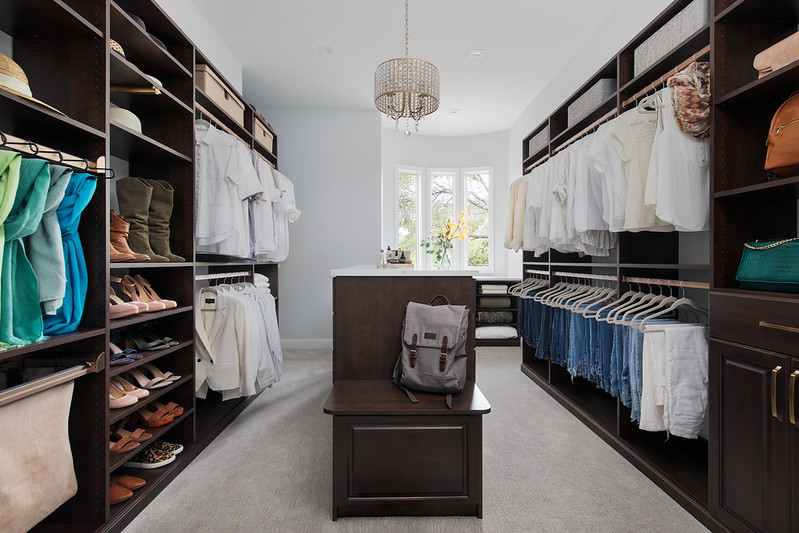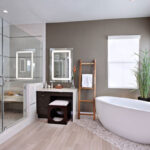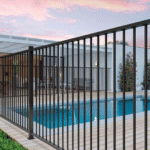
Closet Design: Smart Solutions for Stylish Storage
Table of Contents
In the modern home, storage is more than just a necessity—it’s a key element of interior design and daily functionality. Among the most important storage areas in any home is the closet. A well-designed closet can transform your space, making your mornings more efficient and your home more organized. Whether you’re designing a walk-in wardrobe, a reach-in closet, or revamping a small space, closet design plays a crucial role in enhancing both style and practicality.
This article will guide you through essential closet design principles, popular styles, innovative storage solutions, and tips to create a personalized, efficient, and beautiful closet space.
At Bella Systems, we offer custom storage solutions tailored for Eatontown, NJ, a vibrant community celebrated for its suburban charm, excellent schools, and bustling commercial centers. Nestled in Monmouth County, Eatontown is home to attractions like Monmouth Mall, historic Fort Monmouth, and the scenic Wampum Lake Park. Our expertly crafted designs enhance every home’s unique character—whether it’s a modern suburban residence, a cozy townhouse, or a charming historic property. From built-in shelving and custom closets to garage organization systems, our storage solutions integrate seamlessly into Eatontown lifestyles, maximizing space, boosting functionality, and reflecting your personal style.
Why Closet Design Matters
A thoughtfully designed closet isn’t just about keeping clothes and shoes out of sight. It serves multiple purposes:
- Maximizes available space: Custom layouts make the most of every inch, including corners and vertical space.
- Improves organization: Helps categorize items for quick access and better maintenance.
- Boosts property value: Stylish, functional closets appeal to potential buyers.
- Enhances daily routines: Saves time during dressing and simplifies outfit planning.
Types of Closets and Their Design Approaches
Closet design isn’t one-size-fits-all. Different types of closets require different strategies. Here’s a breakdown:
1. Walk-In Closet
The ultimate in luxury, a walk-in closet offers ample space for wardrobes, accessories, and even seating areas.
Design Tips:
- Use zones for different categories: shirts, pants, dresses, accessories.
- Incorporate a center island for drawers or a jewelry tray.
- Add mirrors and lighting for functionality and elegance.
- Install floor-to-ceiling storage with adjustable shelving.
2. Reach-In Closet
Found in most bedrooms, these standard closets benefit from a smart layout to maximize their limited space.
Design Tips:
- Use double hanging rods to double your hanging space.
- Add stackable drawers or bins for folded items.
- Use vertical space for seasonal storage.
- Install sliding or mirrored doors to save space and create the illusion of depth.
3. Wardrobe/Armoire
Freestanding closets are ideal for rooms without built-in storage. These can be designed as stylish furniture pieces.
Design Tips:
- Choose a model with both hanging and drawer space.
- Opt for units with customizable interiors.
- Use baskets or dividers to keep small items organized.
4. Linen and Utility Closets
Closets in hallways, laundry rooms, or bathrooms serve different purposes but still benefit from clever organization.
Design Tips:
- Use labeled bins and clear containers for easy access.
- Install adjustable shelves to accommodate items of varying sizes.
- Include drawers for small tools, linens, or toiletries.
Elements of Effective Closet Design
A functional and beautiful closet involves several core components. When planning your closet design, consider the following:
a. Closet Layout
The layout sets the foundation for usability. Common configurations include:
- Straight-line (for small or narrow spaces)
- L-shaped (efficient use of corner space)
- U-shaped (maximum storage with three walls)
- Island-based (ideal for large walk-in closets)
The key is to design around your wardrobe. Measure the types of clothing you own (long dresses, suits, folded items, etc.) and plan accordingly.
b. Lighting
Good lighting is essential for visibility and ambiance.
Options include:
- Overhead LED lighting
- Strip or puck lights under shelves
- Motion-sensor lights for energy efficiency
- Backlit mirrors for dressing
c. Materials and Finishes
Choose durable, easy-to-clean materials that suit your home’s aesthetic.
Popular choices include:
- Melamine for affordability and clean look
- Wood veneers for a luxurious, classic feel
- Glass and metal for a modern, sleek design
d. Hardware and Accessories
Small touches make a big difference.
Consider adding:
- Pull-out tie or belt racks
- Jewelry drawers with velvet linings
- Shoe cubbies or angled shelves
- Soft-close drawers and gliding rods
- Hooks for bags or hats
Custom vs. Modular Closet Systems
Custom closets are tailor-made to your space and needs. They offer complete flexibility in layout, materials, and finishes, making them ideal for unique spaces or luxury homes.
Modular systems, on the other hand, come in pre-set sizes and components. They’re budget-friendly and easy to install, often available at home improvement stores.
Both options can be effective, depending on your goals, budget, and space.
Closet Design for Small Spaces
Even the smallest spaces can be transformed with smart design:
- Use over-the-door organizers for shoes or accessories.
- Install shelf dividers to keep stacks neat.
- Hang hooks on closet doors for robes or bags.
- Consider slim-profile hangers to maximize rod space.
- Use pull-out baskets for easy access to small items.
Small closets benefit from minimalism—keep only what you use and love.
Eco-Friendly Closet Design
Sustainability can be stylish, too. Here’s how:
- Choose materials from renewable or recycled sources.
- Use LED lighting to reduce energy usage.
- Incorporate ventilation to keep clothes fresh without deodorizers.
- Repurpose vintage armoires or dressers as closet components.
Final Thoughts
Closet design is about more than storage—it’s about creating a space that supports your lifestyle, reflects your personal style, and enhances your home’s functionality. Whether you’re starting from scratch or updating an existing closet, thoughtful design choices can make a lasting impact.
With the right layout, materials, and accessories, your closet can become one of your favorite areas of the home. It’s a place to start your day with clarity, find your essentials with ease, and enjoy the peace of an organized, beautiful space.
So go ahead—reimagine your closet. With smart planning and creativity, your dream storage space is just a design away.










